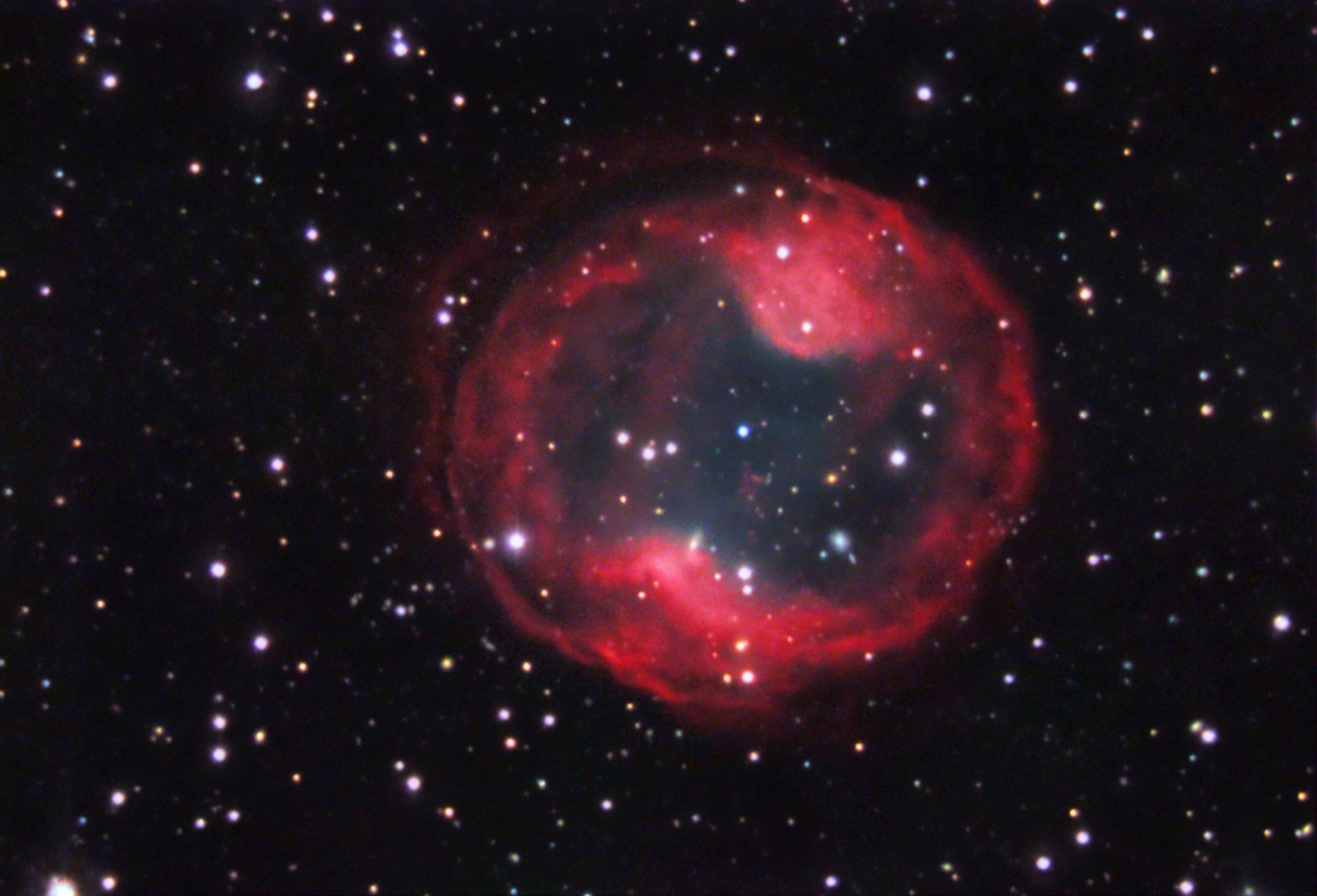

Technical data
Telescopio / Telescope : Schmidt Cassegrain 280 m.m.
D.F. / F.L. : f/10
Montura / Mount : G-11 + Gemini
Cámara CCD : ST-8 XME + AO-7
Lugar / Place : Ayllón - Segovia - Spain
Fecha / Date : 6 - 8 - 11 - 17 nov. y 13 - 14 dic 2007
Exposición / Exposure: 23.17 h. ( LRGB: 580 : 270 : 270 : 270 min )
Sub-exposiciones / Sub-frames : 1.800 y 900 sec..
Como un gigantesco fantasma que nos surge al dirigirnos hacia las estrellas de la constelación boreal del Lince, Jones Emberson 1 o PK 164.8+31.1 ( AR. 2000: 07h 57m 52s Dec. +53 25 14) es una extensa nebulosa planetaria de mg. 14, descubierta por los astrónomos Jones y Emberson en 1939 y catalogada por Perek y Kohoutek en 1967.
Corresponde a los restos de una antiquísima explosión producida en las capas externas de su estrella central de mg 16.8, la cual se distingue, aparte de estar en el centro de la nebulosa, por tener un marcado color azulado al ser de muy alta temperatura superficial.
Es un objeto grande pero poco fotografiado al tener muy bajo brillo y estar en una zona del cielo de dificil localización por estar poco poblada de estrellas brillantes.
Debido a la enormemente baja densidad del gas que la forma es posible distinguir todo tipo de objetos a través de ella. Dentro de sus límites se pueden distinguir en la fotografía, aparte de estrellas, hasta 64 galaxias de fondo las cuales están identificadas de acuerdo con los datos del SDSS.
La galaxia más brillante es de mg. 16.6 y las más débiles rondan la mg. 24. (ver el link: 64+ galaxias dentro de la nebulosa).
Registrar estos datos con equipos de aficionado hubiese sido ciertamente algo impensable hasta hace unos pocos años.
Like a gigant cosmic phantom that bumps into us in our way to the stars of the constellation of Lynx, Jones Emberson 1 or PK 164.8+31.1 ( AR 2000. 07h 57m 52s Dec. +53 25 14) is a large planetary nebula, discovered by the astronomers Jones and Emberson in 1939 and later catalogued by Perek and Kohoutek in 1967.
As other planetaries, it was formed in an ancient explosion that blowed away some of the outer layers of its parent star. This mg. 16.8 high temperature star is easily identified at the center of the nebula by its deep bluish color.
It is an extended object but rarely observed or photographed due to its extremely low surface brightness and the fact that it is located in an area of the sky devoided of bright reference stars.
The gas that forms the nebula is very thin and due to that fact we can actually peer through it and see clearly background stars and galaxies.
Inside its boundaries we can identify up to 64 background galaxies with the help of the Sloan Digital Sky Survey.
The brightest galaxy has mg. 16.62 and the faintest ones get near mg. 24. ( see 64+ galaxies inside nebula outline link).
Registering these data using small amateur equipment would have been something centainly unthinkable not many years ago.